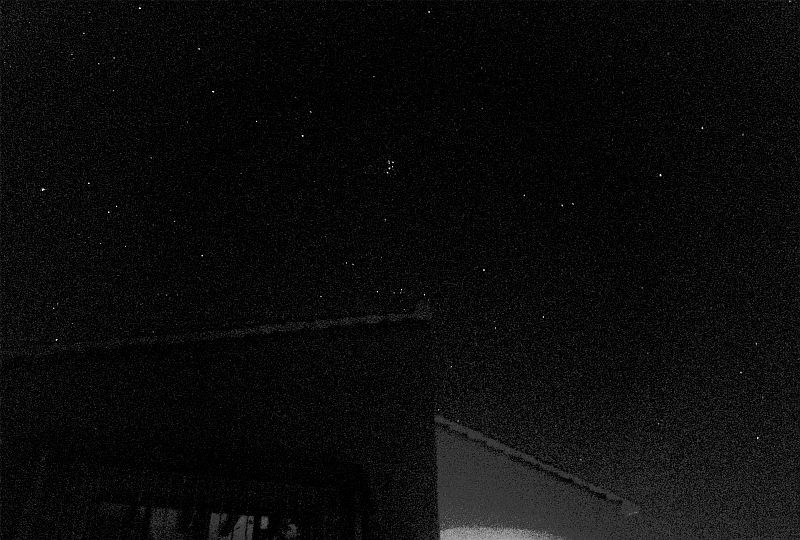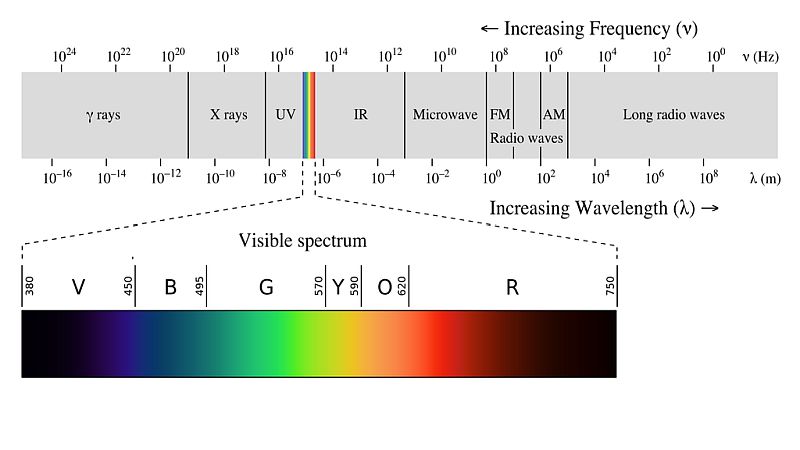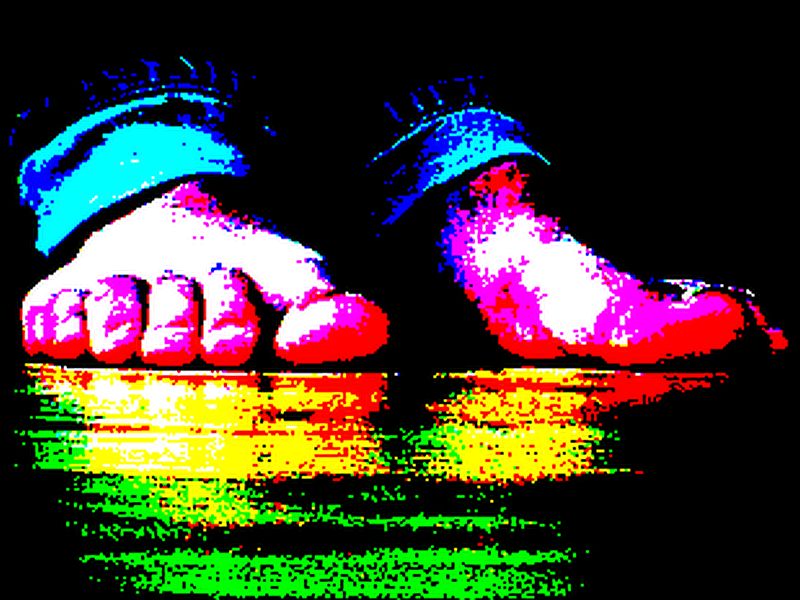COMMUNICATION WITH LIGHT
(1973)
KLIK HIER VOOR DE NEDERLANDSE VERSIE

Light is in less than 2 seconds far beyond the moon. However, light can be very old.
The light from the small group of stars in the center of the photo is 400 years old!
Light
A student party with Paul. I sat there among photography students. Artistic and philosophical types on socks and bare feet who had seen the light and had big plans for the future... No one who knew anything about radio or electronics, what did I do here! Vague conversations about not knowing why we exist. And that we don't know what our task in the universe is, so we just do something... Still, I learned a lot that night. About light and photography and therefore also technology. About lenses and diaphragms. A diaphragm stop is the halving of the light intensity. From F8 to F16 is a quarter of the light intensity. And when you double the distance to a lamp, the light intensity is 4x lesser. And they told about video color effects, but why would you want that? You want the purest image possible of course! Indeed, I was a down to earth technician... No radio? Nothing is less true. Because we talked a lot about light and light is a normal radio signal with a very high frequency, a million times higher than the radio signals we normally use for our radio communication! So actually we talked a lot about radio signals!

With an LDR or Light Dependent Resistor
I might receive modulated light.
The idea of communicating with light
Also interesting that night was that there was a light organ! The brightness of colored lamps was controlled by the strength of the music. Could you receive that light from the light organ and make it audible again with an LDR or a Light Dependent Resistor? No! Because such a light organ is controlled with triacs, so the sound would sound heavily distorted. But it should be possible to receive modulated light with such an LDR. It is not a good idea to use such an LDR to make a light intensity meter, because an LDR has no stable properties and ages quickly.

This light has a thin filament that may follow
the rapid variations of the audio.
Which light source should emit that modulated light? Something that can follow the rapid variations of the audio signal. There were no LEDs yet. But I had a lantern with a 4.5 volt battery and a 6 volt / 50ma light. Because the lamp is lit far below its normal voltage, it does not break easily. And the power consumption is also small, making the battery last a very long time. Yet the lantern gives enough light to walk in the dark. This light has a thin filament that might follow the rapid variations of the audio.

Communication system with light.
The light was connected to a radio with an output transformer. Without a battery it will not work, the light will be equally bright during the positive part and the negative part of a signal and the signal will sound very distorted. And what you want is that the light is on maximum during the positive part and minimum during the negative part. We succeeded in making an audio connection with light over a distance of 2 to 3 meters. But only low tones were heard. The reaction speed of the light and also the LDR were too slow and already formed two low-pass filters in the system. Nevertheless, a lot of text could be understood and the music was easily recognizable. It was also nice to listen to some light sources such as a TV and bicycle lights.

Light communication is very normal nowadays. A remote control works with infrared light.
Infrared light is invisible to our eyes, but visible to your webcam.
Of course, the system would work much better with a light-sensitive transistor and an LED. And we now use light communication a lot. Remote controls work with infrared light, invisible to our eyes, but visible to your webcam. And we have very fast fiber optic connections.

Frequency spectrum. Light is a normal radio signal with a very high frequency!
The visible spectrum has a wavelength with a frequency of 400 (red) to 790 (violet) terahertz. The different wavelengths are seen by the eye as different colors: red for the lowest frequency and violet for the highest. As you can see, the ratio between the highest frequency and the lowest frequency of the visible spectrum is not even very large, just 2:1. With our medium wave broadcast band this ratio is already 3:1 and for the short wave already more than 10:1!
Just outside the visible spectrum are the infrared frequencies at the bottom and the ultraviolet frequencies at the top.
And how do you make white light? Then the entire visible spectrum is filled with noise! This is possible with a light bulb, for example. But it has a poor efficiency because it radiates the most energy in the infrared that is invisible to us.

Student party with stories about color effects!
Index PA2OHH







